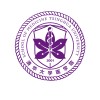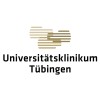
The Effects of Gait Rehabilitation After Stroke by Treadmill-based Robotics Versus Traditional Gait...
StrokeAcute Stroke1 moreThis multicenter non-randomized controlled trial aims to investigate the effectiveness (an increase of the walking speed in the 10 Meter Walk Test - 10MWT) of the robotic treatment with exoskeleton or end-effector system compared to the conventional rehabilitative treatment for the gait recovery after stroke, and to compare the possible different efficacy of end-effector and exoskeleton systems in the various post-stroke disability frameworks. All the eligible subjects admitted to rehabilitation centers, both in the subacute phase will be recorded. The experimental group will follow a set of robotic gait training on stationary robotic systems which do not provide overground gait training (Lokomat Pro - Hocoma AG, Volketswil, Switzerland; G-EO System - Reha technologies, Italy). While, the control group will follow traditional gait training composed of all those exercises which promote the recovery of walking ability (please, see the details of the interventions).

Prediction Model for the Recanalization OuTcome Evaluation of Ischemic Stroke Using Multimodal CT...
StrokeAcutePrediction model for the Recanalization OuTcome Evaluation of ischemic stroke using multimodal CT (PROTECT) study was a multicenter prospective observational study that recruited patients from 13 centers located in 10 provinces across China. The study was to assess the effects of novel imaging biomarkers/ imaging patterns based on multimodel CT for patients selection and outcome prediction in acute ischemic stroke.

Thrombolysis in stRoke With Unknown onSet Based on noncontrasT CT
StrokeAcuteMulticentric, observational, registry-based study of 0.9 mg/kg i.v. thrombolysis in wake-up stroke or stroke with unknown onset based on non-contrast CT appearance only

Berlin - SPecific Acute Treatment in Ischemic or hAemorrhagic Stroke With Long Term Follow-up
StrokeThe B-SPATIAL-Registry will provide a tool of quality assessment for stroke specific Treatments such as endovascular treatment. It will also enable the participating hospitals to compare the quality of care of their facility. At the same time, B-SPATIAL will provide an opportunity of scientific evaluation of new therapeutic procedures or specific treatments in stroke (i.e. reversal of oral anticoagulation in intracerebral hemorrhage or intravenous thrombolysis), not sufficiently investigated so far. Finally, the B-SPATIAL Registry will allow for an identification of key quality indicators that assure valid quality assessment aiming at a reduced documentation load for future quality management.

Electro-physiological Signs to Prognostic Aphasia Recovery After a Stroke
StrokeAphasiaThe purpose of this study is to study, among the aphasic person, if motor function ( studied by Motor Evoked Potentials) performed within the first 14 days after a stroke can predict a good recovery from aphasia 6 months of the initial episode.

The Effect of Health Education Program on Level of Awareness for Stroke Among Population
StrokeThe investigator of this study would like to test the hypothesis of the effectiveness of health education program on level of awareness of stroke among population at risk whom attending the primary health care center in Jeddah, in Saudi Arabia. The investigator will divide the participants into two groups. The intervention group whom will have the intensive health education program, and the control group whom will have the routine care. Participants will be followed up for 3 months to assess the effect of different health education programs on their level of awareness about stroke. Also The investigator will relate different socioeconomic factors to level of awareness.

The Long-lasting Effects of Repetitive Neck Muscle Vibrations on Postural Disturbances in Standing...
HemiplegiaStrokeOne of the causes of disability in patients suffering from a stroke is postural imbalance. Sensory stimulation improves the postural symmetry of the subject transitorily and they are thought to have an effect on the spatial frame of reference through a sensory recalibration. Studies have shown that sensory stimulation by vibration of neck muscles have an immediate effect on static balance and when walking. The objective of this preliminary study is to test the long-lasting effects of repetitive neck muscle vibrations on postural disturbances in standing position and on spatial frame reference in chronic patients.

Implementing Technology Enhanced Real Time Action Observation Therapy in Persons With Chronic Stroke...
Chronic StrokeHemiplegia2 moreThis is a feasibility study to alter the Microsoft Kinect software to be used as a rehabilitation tool. The prototype used is still in the early developing stage. The purpose of this research study is to develop a prototype of altered Microsoft Kinect Software and determine its use in improving the function of the study subjects' weaker extremities. The altered software will allow a viewing of the mirror image of the involved limb as it is moved. However, the image that is viewed will reflect normal movement even if the limb cannot move normally. By viewing normal movement of the weaker limbs the "mirror neuron" network in the brain will become activated and will ultimately improve the function of the weaker side.

Effects of a Compliant Arm Support on Post-stroke Upper Extremity Range of Motion
Arm Weakness as a Consequence of StrokeThe aim of this study is to show that a wearable compliant arm support consisting of inflatable bladders with adjustable straps to connect them to the waist and arm can meaningfully increase the reachable workspace of persons with post-stroke arm weakness.

Cardio-embolic Stroke and Blood Bio-markers
Ischemic StrokeBrain is a productive source of variety of enzymes and any brain injury like stroke to brain tissue could similarly result in an increase in these enzymes in cerebrospinal fluid and serum. Evaluation of these enzymes represent a simple method for the ischemic stroke subtype diagnosis and prognosis .Objective: The aim of this study was to determine the role Brain natriuretic peptide (BNP) , D-Dimer , creatine kinase- MB(CK-MB) , C reactive protein (CRP) serum levels and G/A ratio in diagnosis of CES stroke and its ability to predict short term outcome. Methods: This study was conducted on 96 patients with acute ischemic stroke, subdivided into two groups, group Ι was 48 patients with cardio-embolic stroke and group ΙΙ was 48 patients with non- cardio-embolic. all patients were subjected to assessment of serum BNP, D-Dimer and CK-MB and CRP and globulin /albumin ratio within the first 24 h of stroke .At third week ,they were assessed by mRS.
